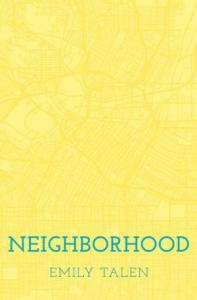Chicago Neighborhoods
This course is an applied learning experience in which students will explore the physical and social dimensions of Chicago neighborhoods. Our particular focus will be the built environment and how it impacts – and is impacted by – the life of the city. Students will observe, interpret and represent neighborhoods through a series of assignments designed to deepen knowledge about the significance and meaning of neighborhood form. Readings and fieldwork will engage students in neighborhood analysis and observation techniques that explore contemporary issues about social diversity, public space, the mixing of uses, and connectivity.
About Chicago's neighborhoods
Chicago's 77 “community areas” (as they’re now called) serve as the official, although misappropriated, neighborhoods of Chicago. Only two more have been added since then (one of the new additions was the community area of “Edgewater,” which had previously been lumped together with Uptown). The Chicago Plan Commission’s Report of 1946 had divided the city into 514 approximately quarter square mile self-contained neighborhoods based on elementary schools, with a population of between 4,000 and 12,000 each (averaging about 7,000). Chicago now has almost 1 million fewer residents, with 484 public elementary schools, which averages to about 5,500 residents per school. In 1978, an official City of Chicago list and map designated 178 neighborhoods based on a resident survey. At one point the City’s map contained 228 neighborhoods (apparently by stealing the work of an independent researcher), but now the semi-official list of neighborhoods (not community areas) is down to 86.
Chicago’s list of neighborhoods has not been updated in any official way for close to 40 years, since the 1978 survey. However, one has the sense that the Chicagoan idea of neighborhood has evolved significantly, and its neighborhoods are much smaller than the 77 community areas Burgess devised. Edgewater, as one example, is composed of 6 identifiable neighborhoods. Neighborhood Ties, Inc., a private website that sells its own independently-derived Chicago neighborhood map for $50 and uses the motto “Everyone’s got to be somewhere,” puts the number at 237.
Another effort worth noting is the "The City of Neighborhoods Project" devoted to illuminating some of Chicago's forgotten neighborhoods.
This map of 228 neighborhoods uses data from the City of Chicago.
Check out all the Chicago neighborhood art on Etsy
 THE UNIVERSITY OF CHICAGO
THE UNIVERSITY OF CHICAGO


